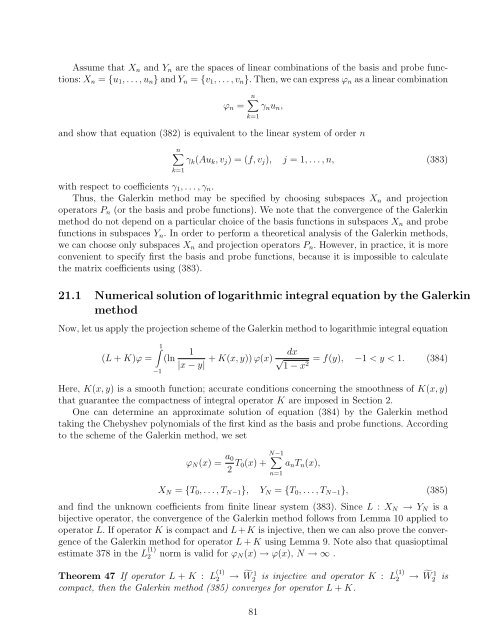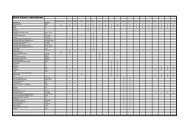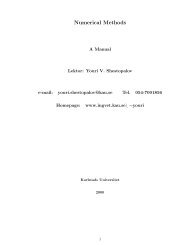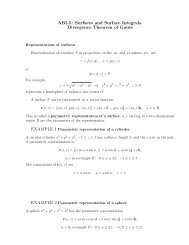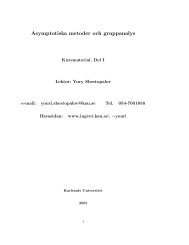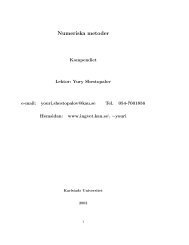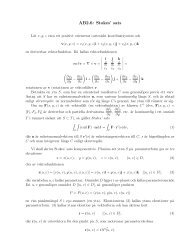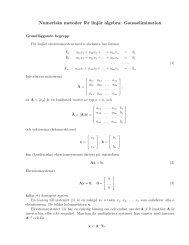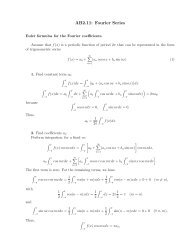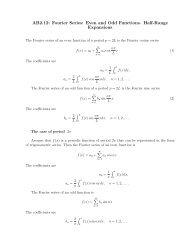You also want an ePaper? Increase the reach of your titles
YUMPU automatically turns print PDFs into web optimized ePapers that Google loves.
Assume that X n and Y n are the spaces of linear combinations of the basis and probe functions:X n = {u 1 , . . . , u n } and Y n = {v 1 , . . . , v n }. Then, we can express ϕ n as a linear combinationn∑ϕ n = γ n u n ,k=1and show that equation (382) is equivalent to the linear system of order nn∑γ k (Au k , v j ) = (f, v j ), j = 1, . . . , n, (383)k=1with respect to coefficients γ 1 , . . . , γ n .Thus, the Galerkin method may be specified by choosing subspaces X n and projectionoperators P n (or the basis and probe functions). We note that the convergence of the Galerkinmethod do not depend on a particular choice of the basis functions in subspaces X n and probefunctions in subspaces Y n . In order to perform a theoretical analysis of the Galerkin methods,we can choose only subspaces X n and projection operators P n . However, in practice, it is moreconvenient to specify first the basis and probe functions, because it is impossible to calculatethe matrix coefficients using (383).21.1 Numerical solution of logarithmic integral equation by the GalerkinmethodNow, let us apply the projection scheme of the Galerkin method to logarithmic integral equation(L + K)ϕ =∫1−1(ln1|x − y| + K(x, y)) ϕ(x) dx√1 − x2= f(y), −1 < y < 1. (384)Here, K(x, y) is a smooth function; accurate conditions concerning the smoothness of K(x, y)that guarantee the compactness of integral operator K are imposed in Section 2.One can determine an approximate solution of equation (384) by the Galerkin methodtaking the Chebyshev polynomials of the first kind as the basis and probe functions. Accordingto the scheme of the Galerkin method, we setϕ N (x) = a N−102 T ∑0(x) + a n T n (x),n=1X N = {T 0 , . . . , T N−1 }, Y N = {T 0 , . . . , T N−1 }, (385)and find the unknown coefficients from finite linear system (383). Since L : X N → Y N is abijective operator, the convergence of the Galerkin method follows from Lemma 10 applied tooperator L. If operator K is compact and L + K is injective, then we can also prove the convergenceof the Galerkin method for operator L + K using Lemma 9. Note also that quasioptimalestimate 378 in the L (1)2 norm is valid for ϕ N (x) → ϕ(x), N → ∞ .Theorem 47 If operator L + K : L (1)2 → ˜W 1 2 is injective and operator K : L (1)2 → ˜W 1 2 iscompact, then the Galerkin method (385) converges for operator L + K.81


